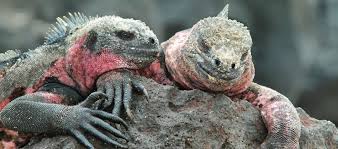

In many ways, the Galápagos Islands appear the same as they did two centuries ago. Sea lions waddle onshore in search of a place to rest; a blue-footed booby circles and dives, coming up with a fish; iguanas bask motionless on volcanic rock. In other ways, the islands have changed significantly. Nature now exists side-by-side with a relentless human tide of migrants and tourists, whose arrival outpaces the islands’ ability to sustain them. Striking a balance between human demand and environmental conservation proves a challenging and ongoing process.
Living Galápagos is a student-authored multimedia website that explores the impact of mankind on the Galápagos Islands. Produced by the University of North Carolina School of Journalism and Mass Communication, this ongoing project offers a mix of human interest and science-related content, offering education, awareness and entertainment for audiences worldwide. Published in 2009, 2012 and 2013, Living Galápagos tells the story as people learn to coexist with the unique place in which they live.
